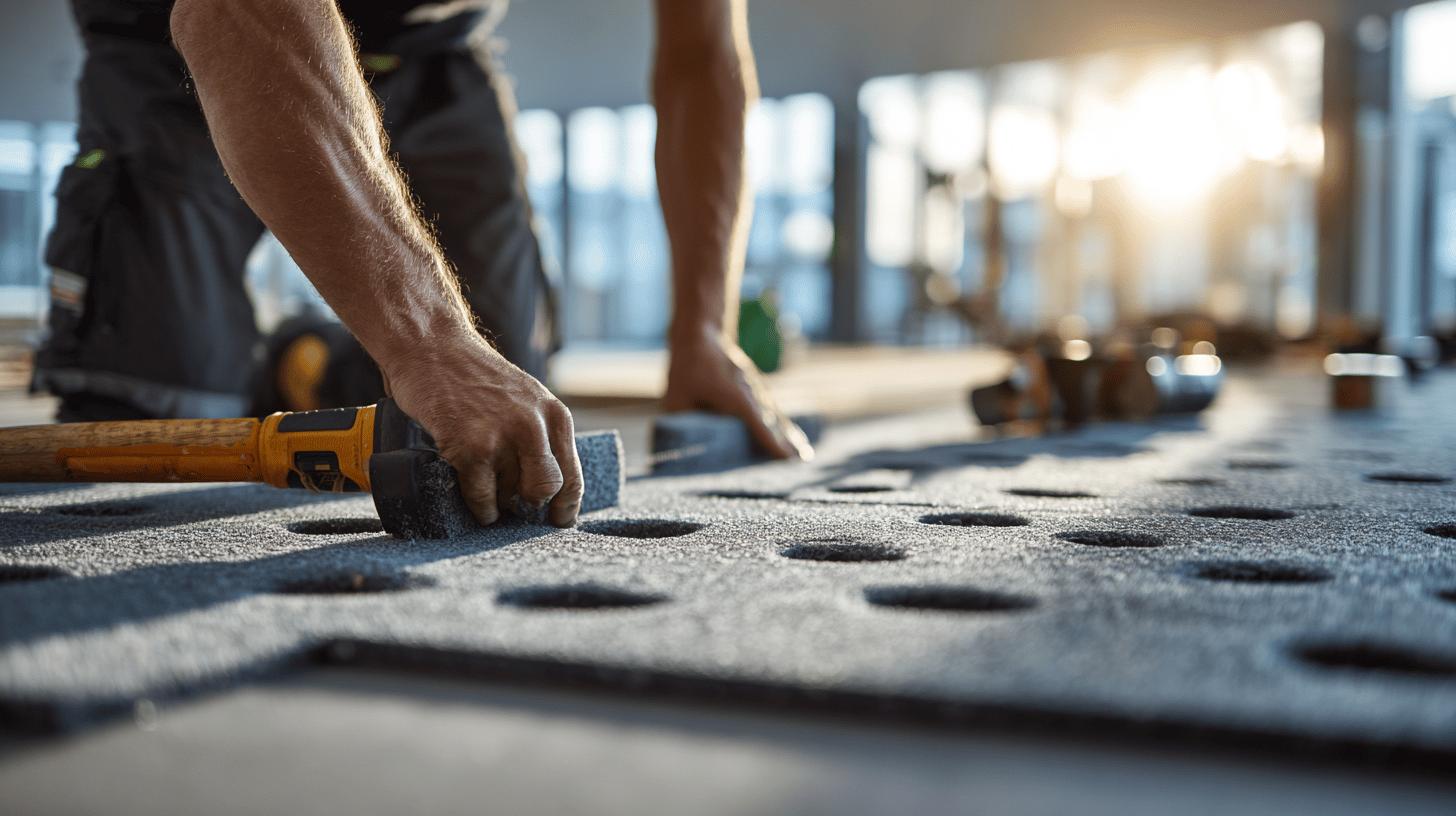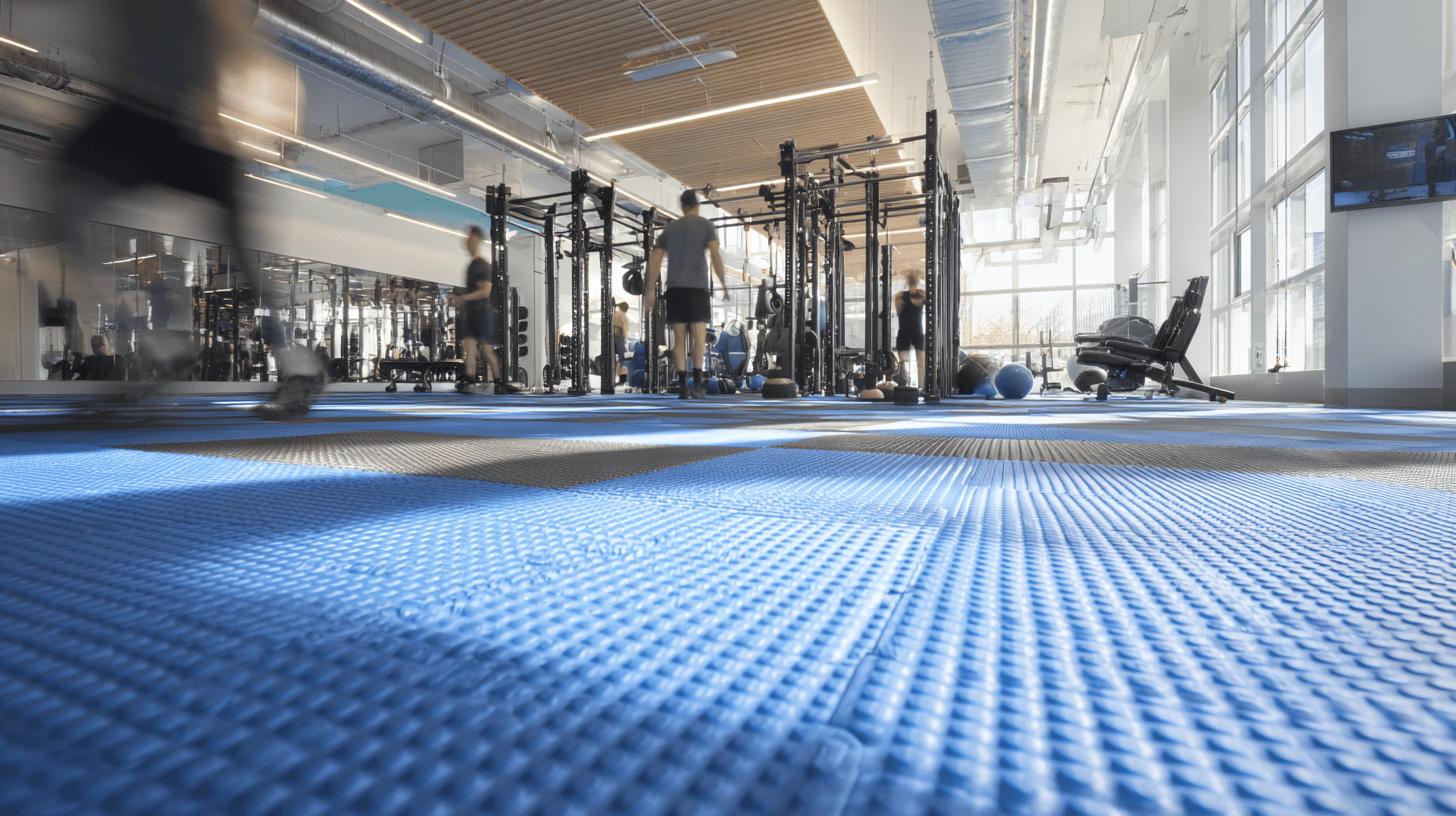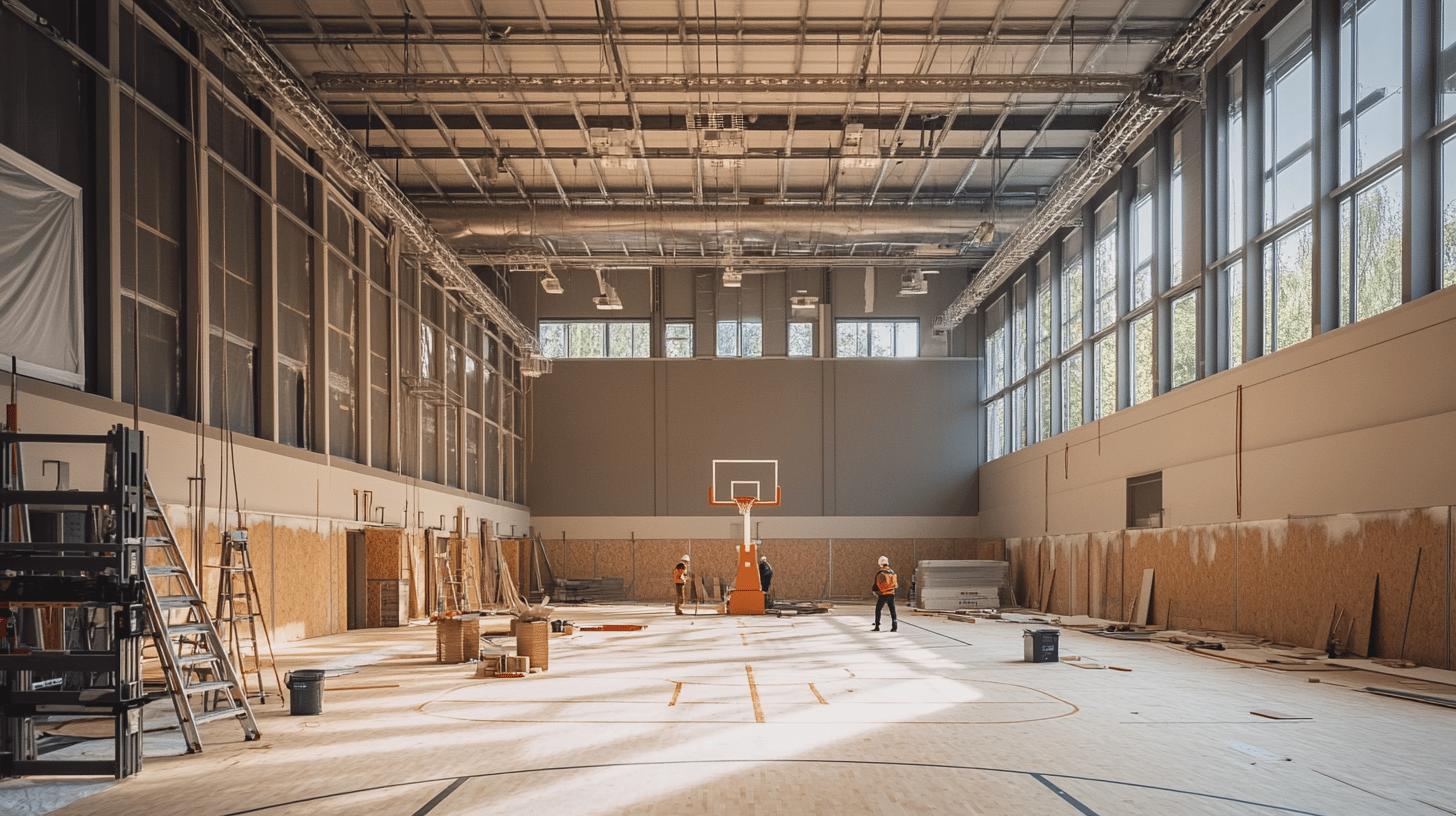According to recent studies, a staggering number of concussions in indoor contact sports could be reduced by incorporating energy-absorbing sub-floors. Could an innovative flooring technology redefine safety standards for sports facilities? Energy-absorbing sub-floors, designed to minimise impact forces, are emerging as a pivotal factor in protecting athletes. Combining advanced materials such as foam layers and engineered subfloor systems, these floors aim to reduce the risk of injury by enhancing shock absorption. Delve into the realm of sports flooring technology to uncover how this evolution not only improves safety but also elevates athletic performance.
Understanding Energy-Absorbing Sub-floors
Energy-absorbing sub-floors are specialised flooring systems engineered to reduce the impact forces that athletes experience during sports activities. By integrating materials like foam layers in synthetic surfaces and subfloor systems beneath wooden floors, these sub-floors provide essential shock absorption. This feature is crucial for protecting athletes from injuries and ensuring safer sports environments, particularly in indoor contact sports where the risk of concussions is higher.
- Foam Layers: Used in synthetic surfaces to offer superior shock absorption and cushioning.
- Rubber Pads: Enhance shock absorption and provide a resilient surface that reduces impact forces.
- Wooden Subfloor Systems: Provide a natural feel and are often used in conjunction with other materials to improve durability and performance.
- Polyurethane Coatings: Offer a smooth, durable surface with additional slip resistance and impact absorption qualities.
- Cork Underlays: Known for their ability to reduce vibrations and enhance the overall shock-absorbing properties of the flooring system.
.
The dual benefits of energy-absorbing sub-floors lie in their ability to protect athletes while simultaneously enhancing performance. By reducing impact forces, these floors minimise the risk of acute injuries such as concussions and chronic joint issues. Additionally, they facilitate smoother and safer movements, allowing athletes to perform at optimal levels with increased confidence. This combination of protection and performance enhancement is vital in creating a safe and effective sporting environment, making energy-absorbing sub-floors a critical component of modern sports flooring technology.
Material Properties of Energy-Absorbing Sub-floors
Material properties are crucial in determining the performance and safety of energy-absorbing sub-floors. In sports engineering, the selection of materials such as wood, rubber, and synthetics is vital for achieving optimal impact absorption. These materials provide the essential benefits of shock absorption, slip resistance, and durability, directly influencing the safety and performance of athletes.
Wood, rubber, and synthetic materials each offer unique characteristics that enhance energy-absorbing sub-floors. Wood is often used in subfloor systems for its natural resilience and durability, providing a stable surface with good shock absorption. Rubber is prized for its elasticity and ability to reduce impact forces, making it an excellent choice for areas requiring enhanced cushioning. Synthetic materials, including foam layers, are engineered for superior impact absorption and slip resistance, offering a versatile and durable solution for indoor sports flooring. These materials are integral to constructing flooring systems that support athletic performance while reducing injury risks.
The use of these materials in energy-absorbing sub-floors significantly enhances athletic performance and safety. By integrating various materials, flooring systems can be tailored to provide the right balance of cushioning and stability, which is essential in preventing injuries such as concussions. The combination of durability, slip resistance, and impact absorption ensures a safer environment for athletes, allowing them to perform at their best with reduced risk of injury. These material properties are indispensable in developing advanced flooring systems that meet the demands of modern sports engineering.
Installation and Design of Energy-Absorbing Sub-floors

Energy-absorbing sub-floors are engineered with two primary systems: floating and anchored resilient systems. Floating systems rest on concrete slabs and feature rubber and foam pads, significantly enhancing shock absorption. This design allows for some movement, which helps dissipate impact forces, making it ideal for environments where flexibility and cushioning are priorities. In contrast, anchored resilient systems are firmly secured to the concrete, which minimises vertical deflection and reduces vibrations. This stability is crucial in sports scenarios requiring consistent surface performance and reduced noise levels. The choice between these systems hinges on the specific requirements of the sports facility and the type of activities conducted therein.
- Facility Type: Consider the sports activities and the expected foot traffic for appropriate material selection.
- Athlete Needs: Prioritise surfaces that offer the right balance of cushioning and stability.
- Budget Constraints: Evaluate the cost-effectiveness of each system in relation to long-term benefits.
- Environmental Conditions: Assess humidity and temperature variations that may affect material performance.
- Maintenance Requirements: Factor in the ease of maintenance and longevity of the flooring system.
- Compliance with Standards: Ensure the flooring system meets relevant safety and performance standards.
.
Selecting the right energy-absorbing sub-floor system is critical for ensuring optimal safety and performance. Each system offers distinct benefits tailored to different sporting needs, from enhanced shock absorption in floating systems to the stability of anchored systems. Thorough consideration of design specifications and athlete safety can lead to improved performance outcomes and a safer sporting environment overall.
Safety Benefits of Energy-Absorbing Sub-floors
Energy-absorbing sub-floors are instrumental in reducing the risk of concussions and other acute injuries in indoor contact sports. By integrating shock-absorbing materials such as foam layers and rubber pads, these floors significantly diminish the impact forces transmitted to athletes during play. This reduction in impact is crucial in preventing concussions, which are common in sports with high physical contact. The sub-floors’ design ensures that forces are distributed more evenly, thereby protecting athletes from sudden jolts and collisions that can lead to serious injuries. Additionally, these floors contribute to minimising chronic conditions by providing a softer landing surface, which reduces the strain on athletes’ bodies over time.
The long-term benefits of energy-absorbing sub-floors extend beyond immediate injury prevention. By offering superior shock absorption, these floors play a vital role in promoting joint health and overall athlete wellbeing. Regular exposure to hard surfaces can lead to wear and tear on joints, increasing the risk of long-term conditions such as arthritis. Energy-absorbing floors mitigate these risks by providing a more forgiving surface that cushions joints during movement. This cushioning effect helps to preserve joint integrity and supports athletes in maintaining their physical health throughout their sporting careers. As a result, athletes can enjoy prolonged participation in their chosen sports with reduced risk of wear-related injuries.
- Vertical Deformation: Measures the floor’s ability to absorb impact by evaluating how much it compresses under load.
- Ball Rebound: Assesses the floor’s energy return properties, which contribute to consistent play and safety.
- Slip Resistance: Evaluates the floor’s ability to prevent slips and falls, crucial in maintaining athlete safety.
- Force Reduction: Quantifies the percentage of impact force absorbed by the floor, essential for reducing injury risks.
- Shock Absorption: Rates the floor’s capacity to absorb and dissipate impact energy, critical for protecting athletes.
.
By incorporating these floors into sports facilities, environments become inherently safer. Energy-absorbing sub-floors ensure that safety measures are in place, significantly lowering the likelihood of concussions and other injuries. The strategic use of advanced materials and design techniques not only shields athletes from immediate harm but also fosters a setting where athletes can perform confidently and at their best. These floors serve as a preventative measure, safeguarding athletes against both acute and chronic injuries, and play a pivotal role in creating secure and supportive sports environments.
Comparing Energy-Absorbing Sub-floors with Standard Flooring
Standard flooring in sports facilities often falls short in terms of shock absorption and safety, which are critical factors in preventing injuries. Without specialised materials designed to disperse impact forces, standard floors can transmit high levels of stress to athletes’ bodies, increasing the likelihood of concussions and other injuries. This lack of impact absorption is particularly concerning in indoor contact sports, where the intensity and frequency of physical interactions are high. Additionally, standard floors may not provide adequate slip resistance, further heightening the risk of falls and related injuries. The absence of advanced shock-absorbing properties in these floors limits their effectiveness in creating a safe sporting environment.
Energy-absorbing sub-floors significantly enhance athlete performance and safety by providing superior shock absorption and stability. These floors are engineered to reduce vibrations and distribute impact forces more evenly, which is crucial in minimising the risk of concussions and other impact-related injuries. By incorporating materials such as foam layers and rubber pads, energy-absorbing floors offer a cushioned surface that protects athletes during high-intensity activities. Key performance metrics, including ball rebound tests and vertical deformation, underscore the enhanced performance of these floors. Improved ball rebound ensures consistent play, while optimal vertical deformation indicates effective shock absorption, both of which contribute to safer and more reliable sports environments.
By choosing energy-absorbing sub-floors, sports facilities can ensure a more secure environment, thereby fostering better athlete performance and reducing injury risks.
Case Studies: Success of Energy-Absorbing Sub-floors

Real-world applications and success stories are pivotal in understanding the impact of energy-absorbing sub-floors on sports safety. These floors, designed to mitigate the forces experienced during high-impact activities, have been successfully implemented in various sports facilities worldwide. This has not only led to reduced injury rates but has also enhanced athlete performance, showcasing the vital role of customised flooring solutions tailored to specific sports and environments. By examining these success stories, one can appreciate how innovative sports programme initiatives contribute to creating safer sports environments.
A notable case study involves the installation of energy-absorbing sub-floors in a prominent indoor basketball arena. Following the upgrade, the facility recorded a significant decrease in concussion incidents among players, attributed to the advanced shock absorption properties of the new flooring. The reduction in injury rates was complemented by improvements in athlete performance, as players reported feeling more confident and agile on the cushioned surface. This transformation highlights the effectiveness of energy-absorbing sub-floors in reducing the risk of both acute injuries and long-term physical ailments, demonstrating their critical role in enhancing player safety.
For sports facility managers and health professionals, the broader implications of integrating energy-absorbing sub-floors are substantial. By prioritising flooring solutions that address specific sports requirements, facilities can better safeguard athletes from injury while promoting optimal performance. This focus on safer sports environments not only fulfils health and safety standards but also fosters a culture of care and excellence in sports management. Consequently, energy-absorbing sub-floors represent a strategic investment in the wellbeing of athletes and the overall success of sports programmes.
Final Words
Diving into energy-absorbing sub-floors reveals their critical role in enhancing athlete safety and performance. By incorporating materials like foam and robust subfloor systems, these innovations significantly reduce impact forces. The advanced flooring systems, exemplified by floating and anchored designs, underline the importance of tailored installations to meet facility needs and athlete demands.
Employing energy-absorbing sub-floors ensures not only the reduction of concussion risks but also announces a leap towards safer sports environments. Enhanced shock absorption fosters athletic prowess, showcasing a win-win for sports programmes prioritising athlete well-being and performance excellence.
Specify safer floors → International Sports Flooring
FAQ
What are energy-absorbing sub-floors?
Energy-absorbing sub-floors are designed to reduce impact forces transmitted to athletes’ bodies. These floors incorporate materials such as foam layers in synthetic surfaces or subfloor systems in wooden floors to provide necessary shock absorption.
How do energy-absorbing sub-floors benefit athletes?
Energy-absorbing sub-floors protect athletes by reducing the force of impacts, which minimises the risk of acute injuries and chronic conditions. This shock absorption also allows for smoother and safer movements, enhancing performance.
What materials are used in energy-absorbing sub-floors?
Key materials include foam, rubber, wood, synthetic layers, and subfloor systems. Each offers unique benefits such as shock absorption, slip resistance, and durability, essential in various sports applications.
How do material properties affect energy-absorbing sub-floors?
Material properties like shock absorption, slip resistance, and durability significantly impact the floors’ performance and safety. These characteristics contribute to enhanced athletic performance and a safer sports environment.
What are the installation considerations for energy-absorbing sub-floors?
Deciding between floating and anchored systems is vital. Floating systems usually employ rubber and foam pads, while anchored systems are secured to minimise vertical deflection and reduce vibrations, affecting shock absorption.
What are the safety benefits of energy-absorbing sub-floors?
These floors significantly reduce concussion risks and other injuries by lowering impact forces. They contribute to long-term joint health and overall well-being, creating a safer sporting environment.
How do energy-absorbing sub-floors compare with standard flooring?
Standard floors often lack the shock absorption capabilities found in energy-absorbing sub-floors. The latter offer improved stability and reduce injury risks, proving more effective for athlete performance and safety.


